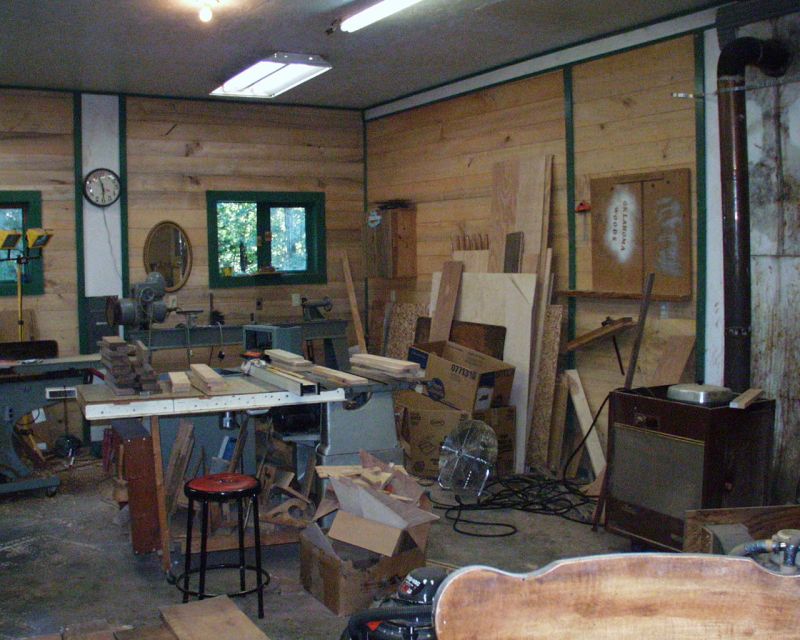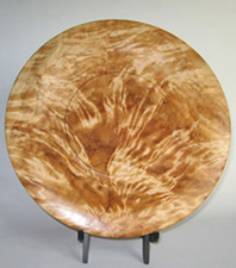Cottonwood for Building
Cottonwood has drawbacks, but it can be used. Here's more information. August 18, 2009
Question
I recently purchased a portable sawmill, and have easy access to cottonwood. Can cottonwood be used green for either indoor or outdoor use? I live in a barn that needs a ceiling in the loft (which will be a living area). Would it be possible to hang cottonwood 1X's green, or how would it need to be dried? Also would like to use slabs from milling as fencing - is green okay for that?
Forum Responses
(Sawing and Drying Forum)
From contributor A:
Here in the Pacific Northwest, cottonwood is not too good for anything. There is a lot of water in it. It rots within weeks of being outside. It shrinks more than any wood I have cut. Other parts of the country might be different. In log form it starts to rot as soon as it lies on the ground for a month. If you cut it green, sticker it until it is dry and then treat the hell out of it; it should last for a while. I would never use for any type of construction. It does work well for side boards for dump trucks. It is very easy to cut and you need to make sure the saw blades are very sharp. It is very good to practice with in the learning curve of the sawmill.
From Professor Gene Wengert, forum technical advisor:
Eastern cottonwood is pretty good, especially compared to the other cottonwoods. In fact, it used to be that 50% of wooden caskets in the east were cottonwood. Because it is so soft, it can not be treated like oak when machining or gluing. In any case, you need to dry it as it will support mold and mildew until dry. I would not want that in or near a living space. For fencing, it will rot within a year or two in most cases.
From contributor D:
Below is a fuzzy picture of E. cottonwood paneling in my shop. Had the CW sawn into 1x8, qtr sawn. Did not lose a single board - 168 of them - to drying problems. The CW tree had a 38" DBH, got 5-10' logs out of the tree. AD for several months, maybe six or more. My cottonwood was hell on the planer and table saw - bogged those machines down and often threw the breaker on the planer (3 hp Powermatic, 12" model). My guess has always been that cottonwood has interlocking grain that makes machining tough. Did get some fuzzy grain here and there, reaction wood - did not bother to sand it down (not a big deal in a wood shop).
Have seen a few folks use cottonwood for framing material. Seems I reviewed the specs and compared CW to SYP many moons ago. Came to the conclusion to beef up the framing material of CW by 25%. Gene can correct me if my memory is wrong here.

Click here for higher quality, full size image
From contributor B:
We used Eastern cottonwood for cabinets and trim in our dressing room. It can be absolutely beautiful with all the figure one finds in maple. I am a wood turner. The most magnificently figured piece of wood I have ever turned was cottonwood. This picture does not do it justice. By the way, the wood used for the trim and cabinets soaked up so much finish I thought it would drip through to the other side.

From contributor M:
Dry the cottonwood for the ceiling. Here in western Canada it was commonly used in barns in the 30's to the 50's. The story goes that horse urine acts as a preservative. It was also common as decking in haylofts. You will need to pre-drill the nail holes or the wood will split. As far as the fence goes, if you are okay with the look of slabs for the fence, then nail them up. If they rot off you can always put up more and you might have to hammer the nail tight after the slabs dry.
From the original questioner:
I also have access to maple (I think it is silver maple), ash and hackberry. Would one of these be a better option? Looking for a lighter weight wood that would be strong enough for 24" spans. Could any of these be air dried enough to mount on ceiling and finish drying there? We heat with wood, so can have real dry conditions. We do not live in this area of the barn yet. Or do I have to build a kiln now?

